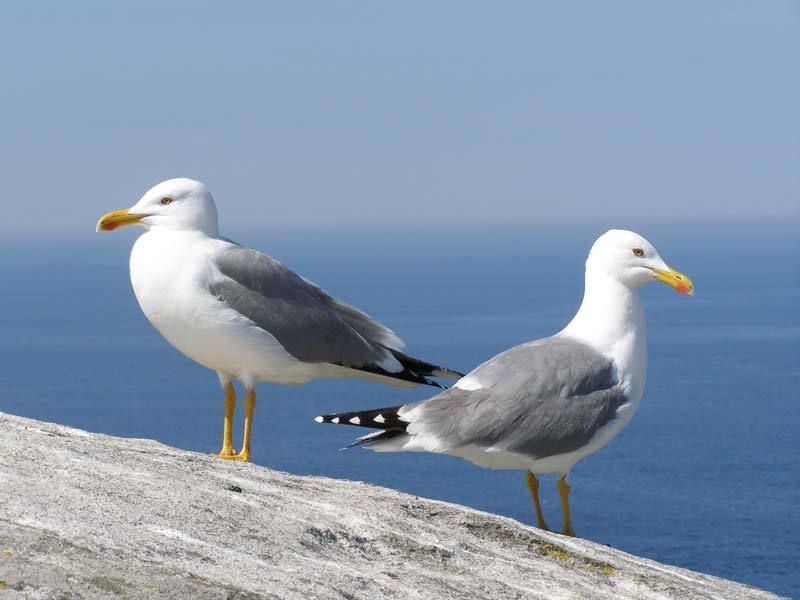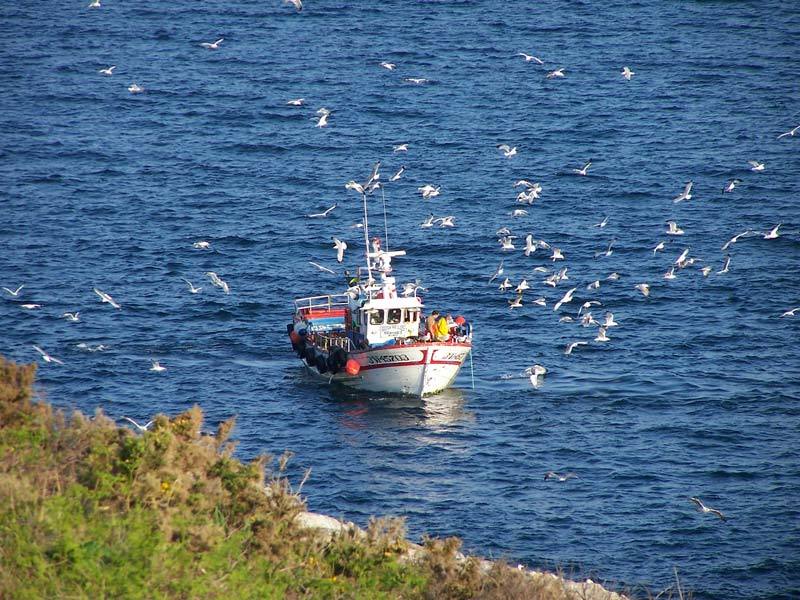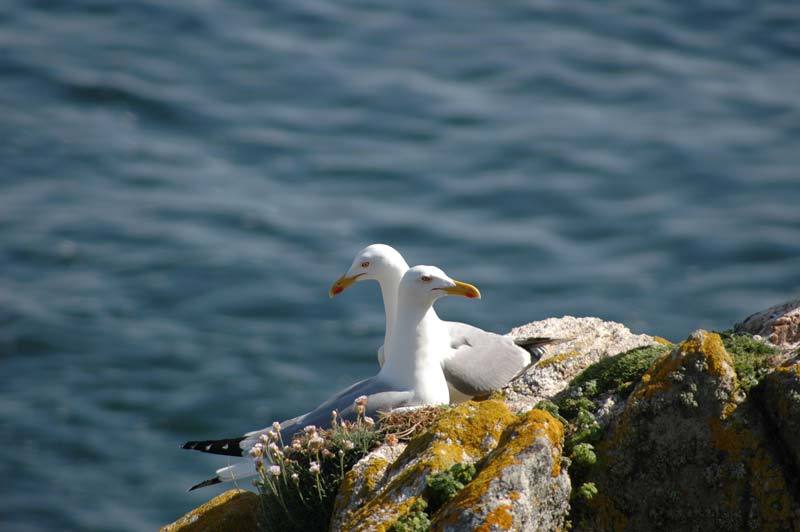It´s the most common sea bird that is the fauna of the park. As it´s sedentary it stays all year round on the islands with colonies of international importance. There are around 22.000 reproductive pairs. They are 55 cms tall. Male and female have the same plumage.
They are opportunistic, not very specialized, robust and they have a strong beak. The old ones are easy to recognize because of their white plumage except on the top part of the wings and on the back which is silver-grey. The tips of the feathers of an old gull are black meanwhile they are brown when the gull is young.
The beak of the adult gull is yellow with a red spot at the bottom, which is the place where the baby gulls take the food from. Male and female gulls take turns to incubate the eggs and feed their babies.
The breeding period is from April to August. Two or three eggs are usually laid. Nests are either on the rocky ground or in the vegetation of the low part of the cliff.
The brown eggs are incubated for 30 days. After this period the baby gull soon walks around the nest. It will finish growing in one and a half months and it will fly after six weeks.
Immature babies of the first year are brown and light ash colour in the second year. In the third year, the young gulls start to have its unique colour.


